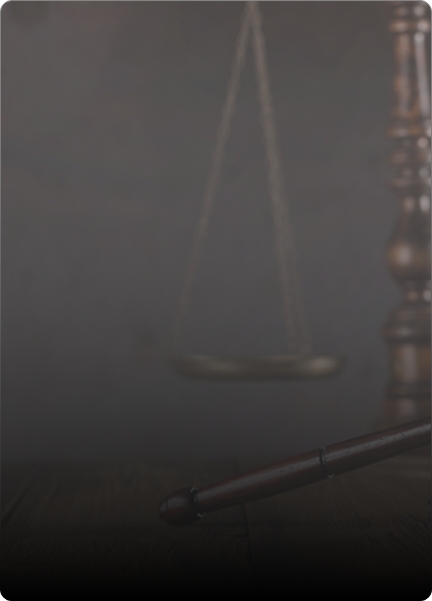Understanding the Criminal Justice Process in Singapore: From Arrest to Sentence
- What is the role and powers of the police after an accused person committed an offence?
- What are the possible outcomes of police investigations in criminal cases?
- What factors influence the prosecution’s decision to charge an accused person in a criminal case?
- What is the procedure at the first court mention after the accused is charged?
- What should an accused person consider when deciding whether to claim trial or plead guilty?
- What is the court procedure in a trial?
- What is the court procedure in a plead guilty mention?
Introduction
The criminal justice process can be a complex and intimidating experience for those involved. In Singapore, the process involves multiple stages from the initial arrest to the final sentence. Understanding this process is crucial for those accused of a crime, as well as for victims and the wider community. This article aims to provide a comprehensive overview of the typical process for an accused person going through the criminal justice process in Singapore, from the role and powers of the police after an offence is committed to the court procedures in a trial or a plead guilty mention. By breaking down each step of the process, readers can gain a deeper understanding of what to expect and make more informed decisions throughout the legal proceedings.
What is the role and powers of the police after an accused person committed an offence?
The police are responsible for investigating any reported offences. When an offence is committed, the first step is for the police to be notified. This usually occurs by way of a First Information Report (“FIR”).
FIR
A FIR in Singapore is a document that is prepared by the police when they receive information about the commission of a crime by the complainant. The FIR is an important document as it contains the identity of the complainant, the initial message sent by the complainant, the location of the alleged offence, details of the alleged offence.
The police will use the information in the FIR as a starting point for their investigation. The police will arrive at the scene of the offence and follow up on any leads that may help to identify and apprehend the accused person. The investigation may involve interviewing witnesses, gathering evidence, and conducting forensic tests.
Arrestable offence
An arrestable offence is any offence for which the maximum punishment is imprisonment for a term of not less than two years. If the police believe that there is sufficient evidence to suspect that a person has committed an arrestable offence, they may arrest him without a warrant and take him to the police station for further questioning.
When a person is arrested for an arrestable offence in Singapore, they may be detained by the police for up to 48 hours without a warrant. If the police require more time to investigate the case, they will apply to the court for a remand order to detain the accused person for a longer period.
In addition to the power to arrest without a warrant, the police also have the power to search and seize evidence in relation to an arrestable offence. They may enter and search any premises, vehicle, or person if they have reasonable grounds to suspect that evidence of the offence is present.
Non-arrestable offence
Conversely, non-arrestable offences are considered offences that carry a maximum punishment of a fine of $5,000 or less, or imprisonment of up to 6 months, or both. Instead of having the power to arrest them without a warrant, the police have the power to issue a summons to the offender instead.
The summons requires the offender to attend court at a specified date and time to face the charges. If the offender fails to attend court, the police or prosecution will apply for a warrant of arrest from the court. The offender will then be arrested and brought to court to face the charges.
What are the possible outcomes of police investigations in criminal cases?
During the course of the investigations, the police will record their findings in the Investigation Paper (“IP”). After the police have conducted their investigations, the Investigation Officer (“IO”) will make his recommendation based on the findings.
The IO’s superior, also known as the Officer-in-Charge (“OC”), will review the IO’s recommendation. The OC may order the IO to conduct further investigations if he thinks there are unanswered questions or gaps, so that the investigation is thorough and complete. The OC will then make his recommendation as well. The recommendations by the IO and OC may be similar or different.
Three possible outcomes of recommendations
Each recommendation may be categorized into three possible outcomes: (1) no further action, (2) warning, or (3) charge.
No further action is recommended if the police believe that the offence is not made out against the accused person. In layman terms, one can think of this outcome as the accused is innocent of the alleged wrongdoing.
A warning can be a stern warning or a conditional warning. A stern warning is a formal warning given by the police to the accused person for committing the offence. A conditional warning is a stern warning that comes with a condition. Typically, the condition is that the current offence may be revived against the accused person if he reoffends within a period of time, usually 12 months or 24 months.
The police will recommend to charge if the police believe that the offence is made out against the accused person, and there is sufficient evidence to support the charge. The police will then submit the IP containing the findings and conclusions of their investigations and their recommendations to the Attorney-General’s Chambers (AGC), also known as the prosecution.
What factors influence the prosecution’s decision to charge an accused person in a criminal case?
Recommendation by police; decision by the prosecution
Upon receiving the IP from the police, the prosecution will assess the IP. Depending on the complexity of the matter, the prosecution will internally assign the matter to a Deputy Public Prosecutor (“DPP”) of appropriate seniority. The assigned DPP will carefully scrutinize the findings and conclusions of the police investigations in the IP, including the recommendations of the IO and OC.
As experienced and competent as our police officers are, they are ultimately not expected to be legally trained. It is this legal knowledge and expertise that the DPP possesses and exercises when he assesses the matter. The police is concerned with fact-finding and uncovering the truth of who committed the offence. But that is only the first step. The DPP is concerned with the cogency of the evidence and whether the prosecution is able to prove the legal guilt of the accused person in a court of law. This is especially important if the DPP is deciding whether to charge the accused person.
The DPP’s decision is also categorized into the same three outcomes as the police’s recommendation. If the DPP assesses that the offence is not made out, he will decide to take no further action against the accused. If the DPP assesses that the offence is made out, but there is room for leniency and/or the offence is not a serious one, he may decide that a warning is sufficient.
Public interest as the litmus test
The litmus test for whether the DPP decides to charge the accused is whether it is in the public interest to do so. This decision is only reached after careful deliberation of a host of factors. These factors will include the seriousness of the offence, the number of offences, the accused’s age, the accused’s background and record, the accused’s remorse or lack thereof, the admissible evidence to prove the accused’s guilt should he decide to claim trial, the availability of the witnesses.
Every case is unique and will turn on its facts. The prosecution’s very power to decide whether to charge an accused (and what charges to bring) is what we call prosecutorial discretion.
Oversight within the prosecution
There will minimally be one level of oversight within the prosecution. After the assigned DPP has made his decision, he will explain his reasons for reaching that decision in the IP. The IP will then be forwarded to a DPP of greater seniority. The senior DPP will assess the IP and the assigned DPP’s decision with a fresh pair of eyes.
This is not simply a rubber stamp by any means. The senior DPP can and does on occasion disagree with the assigned DPP’s decision. Should that happen, both of them will discuss the matter together and reach a unified decision.
What is the procedure at the first court mention after the accused is charged?
How the accused is informed of the first court mention
Once the prosecution has decided to charge the accused, this decision will be relayed back to the IO. The IO will then contact the accused. The IO will tell the accused to report to him at the police station on a given date and time. Upon reporting, the accused will be read and given the charges. The IO will inform the accused of his court date and time. The court date will typically be within the next 48 hours.
At the first court mention, the accused will be informed of the charges against them. These charges may be read to the accused by the court officer or the court interpreter before his case is called before the judge.
What is required from the prosecution
The first court mention is usually administrative in nature. The judge will ask the prosecution if they have completed investigations and decided on what charges and how many charges to bring against the accused. If the prosecution requires more time, they may seek an adjournment from the court. Usually 4 weeks is given each time, but the prosecution must account to the court each time an adjournment is sought.
What is required from the accused
If the prosecution is ready to proceed, the judge will ask the accused if he wishes to claim trial or plead guilty to the charges. This allows the judge to know where to arrange the next court mention. If the accused wishes to claim trial, the matter will be sent to Pre-Trial Conference (“PTC”) at the soonest possible. If the accused wishes to plead guilty, the matter will be sent to a different court for the accused to plead guilty on a different day.
The judge will also ask the accused whether he wishes to engage a lawyer. If the accused wishes to do so, the judge will give the accused some time to do so. Usually 2 to 4 weeks is given, and the accused’s lawyer is expected to appear at the next court mention.
The judge may also ask the accused whether he wishes to write and send a letter of representations to the prosecution. If the accused wishes to do, the judge will similarly give the accused some time to do so. A 3 to 4-week adjournment for this purpose is common.
What should an accused person consider when deciding whether to claim trial or plead guilty?
Did the accused commit the offence?
The decision to claim trial or plead guilty depends on the individual circumstances of the case. The overriding factor to keep at the forefront will necessarily be whether the accused did commit the offence in the first place.
Will the accused receive a better outcome by claiming trial or pleading guilty?
It will be wiser and generally more advantageous to plead guilty if the accused has committed the offence. The prosecution is likely to be able to prove the accused committed the offence. If the accused claims trial but gets convicted eventually, he will not be entitled to a sentencing discount. Conversely, an early plea of guilt is indicative of remorse on the accused’s part. This translates into obtaining a better plea offer from the prosecution and a lighter sentence from the court.
There may be situations where the accused did commit the offence and is factually guilty. However, for strategic reasons, the accused decides to claim trial nonetheless. This could be viable if the prosecution’s case is not particularly strong and the accused is confident of raising a reasonable doubt. Another viable scenario is when the accused is able to rely on and prove a legal defence.
Can the accused afford the cost of legal fees?
Another factor to consider is the cost. The reality of the situation is the legal fees will be significantly higher if the accused decide to claim trial.
What is the court procedure in a trial?
The Prosecution’s Case
A trial is a court hearing where parties will take turns to present their case through the calling of witnesses and presenting evidence. The prosecution will call their first witness to the stand. The DPP will ask the witness a series of non-leading questions. The witness will then be subjected to cross-examination by the defence. This will end off with the DPP re-examining the witness based on the areas raised during cross-examination. This will conclude the testimony of the first witness. The prosecution will then call their second witness. This will continue until the prosecution has called its last witness.
The Defence’s Case
It will now be the defence’s turn to present its case. The accused can choose to give evidence or he can elect to remain silent. If he elects to remain silent, the court may draw an adverse inference against him. If he chooses to give evidence, he will take the stand. The defence will then ask the accused non-leading questions, followed by the DPP cross-examining the accused. This will end off with the defence re-examining the accused based on the areas raised during cross-examination. The defence will then call the second witness. This will continue until the defence has called its last witness.
Submissions
Parties will then make submissions to the court. Usually this will take the form of both written and oral submissions. Submissions are arguments presented by the parties to support their case. These will consist of arguments based on the law and the facts of the case. The goal is to convince the judge of the merits of your case, respond to the arguments made by the opposing side, and persuade the judge to reach the verdict in your favour.
Verdict
If the judge finds that the prosecution has not proven its case beyond a reasonable doubt, he will acquit the accused and the accused person will be released immediately. If the judge finds that the prosecution has proven its case beyond a reasonable doubt, the accused is convicted.
Sentence
Parties will then address the judge on the appropriate sentence. This may take the form of imprisonment, fine, or both. For certain offences, there may be caning involved. After parties have submitted further submissions on the proposed sentence, the judge will decide on the appropriate sentence. The accused will then serve the sentence accordingly.
What is the court procedure in a plead guilty mention?
If the accused chooses to plead guilty, the judge will fix the matter for a plead guilty mention. The accused will be notified of the court date, time, and court venue.
On the day of the plead guilty mention, the following will take place:
- The accused will be informed of the charges against him and the potential penalties that may be imposed if found guilty. This is read to the accused by the court officer or court interpreter.
- The accused confirms that he wishes to plead guilty to the charges. The accused informs the judge of this.
- The DPP will read out a Statement of Facts (“SOF”). The SOF is a statement that presents the facts of the case and the evidence against the accused for the proceeded charges.
- The accused confirms that he accepts the SOF without qualification.
- The judge will proclaim the accused is guilty and convicted.
- The DPP will read out the accused’s criminal record, if any.
- The DPP will state and explain the sentence the prosecution is seeking.
- The accused will be invited to make his mitigation plea.
- The accused will plead for leniency and state and explain the sentence he is seeking.
- The DPP is allowed the final right of reply to what the accused has stated in his mitigation plea or submissions for sentence.
- The judge will impose the sentence.
If the accused is not satisfied with the sentence, he may appeal the decision.
Conclusion
In conclusion, navigating the criminal justice process in Singapore can be challenging and stressful. However, by having a thorough understanding of the process from arrest to sentence, individuals can better prepare themselves for what to expect and make informed decisions regarding their legal representation and plea options. It is essential to note that each case is unique, and engaging an experienced criminal defence lawyer can help you navigate the criminal justice system and ensure that you are properly represented in court. Nevertheless, having a solid understanding of the criminal justice process is a critical first step towards ensuring a fair and just outcome for all parties involved. We hope that this article has provided a useful guide to the criminal justice process in Singapore and can assist readers in navigating this complex and important aspect of the legal system.



